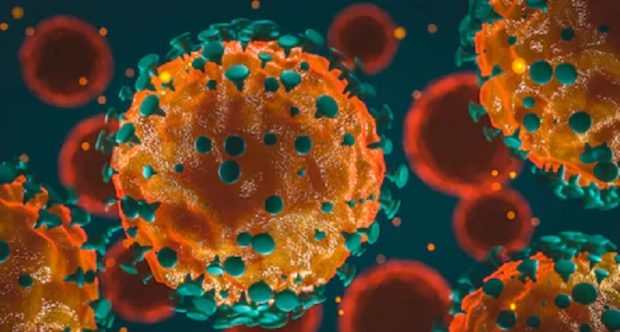
Scientists map how Covid-19 spread indoor via aerosol
PTI, Jul 30, 2020, 3:49 PM IST

Washington: Scientists have simulated how the novel coronavirus spreads indoors via aerosols as infected people speak or exhale, and have found the features of good ventilation that can filter virus particles out of the air, information that may help businesses and schools reduce COVID-19 transmission when they reopen.
The researchers, including Jiarong Hong from the University of Minnesota in the US, modeled indoor airborne virus transmission via aerosols, which are tiny droplets ejected from people’s mouths when they exhale, speak, or cough.
According to the yet-to-be peer-reviewed study, published in the preprint server arXiv, when an infected person does this, the virus particles hitch a ride on the aerosols as they land on nearby surfaces, or are inhaled by another person.
Using precise experimental measurements of aerosols released by eight asymptomatic individuals with COVID-19, the scientists numerically modeled the external flow of the virus through the air in three interior spaces an elevator, a classroom, and a supermarket.
They then compared the virus transmission among different levels of ventilation, and with different spacing among the rooms’ occupants.
“This is the first quantitative risk assessment of the spatial variation of risks in indoor environments. You see a lot of people talking about what the risks are of staying in confined spaces, but nobody gives a quantitative number,” Hong said.
“I think the major contribution we’ve made is combining very accurate measurements and computational fluid dynamics simulation to provide a very quantitative estimate of the risks,” he added.
Based on their experiments, the researchers found that in indoor spaces, good ventilation will filter some of the viruses out of the air, but may leave more viral particles on surfaces.
“Our results show that the design of ventilation is critical for reducing the risk of particle encounters. Inappropriate design can significantly limit the efficiency of particle removal, create local hot spots with orders of magnitude higher risks, and enhance particle deposition causing surface contamination,” they wrote in the study.
“In the classroom setting, after running a 50-minute simulation with an asymptomatic teacher consistently talking, only 10 percent of the aerosols were filtered out,” the scientists said.
“The majority of the particles were instead deposited on the walls,” they added.
“Because this is very strong ventilation, we thought it would ventilate out a lot of aerosols. But 10 percent is really a small number,” said Suo Yang, another co-author of the study.
“The ventilation forms several circulation zones called vortexes, and the aerosols keep rotating in this vortex. When they collide with the wall, they attach to the wall,” Yang explained.
However, the mechanical engineer said it’s very hard for the aerosols to reach the vent and actually go out since “they are basically trapped in this vortex.”
In each scenario, the scientists mapped the airflow to find locations of virus “hot spots” in the indoor environment, or where the aerosols congregated.
With the right combination of ventilation and interior organization, they said it could be possible to mitigate the disease spread and avoid these hot zones.
Citing the example of a classroom setting, the scientists said the virus aerosols spread significantly less throughout the room when the teacher, who is likely doing the most talking, was placed directly under an air vent.
The researchers believe the findings could inform how classrooms are arranged and disinfected, and also help places like movie theatres and concert venues reopen with the proper precautions.
“If you do a good job if you have good ventilation at the right location, and if you scatter the seating of the audience properly, it could be much safer,” Yang said.
Udayavani is now on Telegram. Click here to join our channel and stay updated with the latest news.
Top News

Related Articles More

Rapid digital expansion to create over 1 lakh new jobs in fiber tech in India in next 5 years

National Consumer Helpline to roll out AI-based features, partners with 1,000 firms

BTS2024: If India can make rocket sensors, it can also make car sensors, says ISRO chief Somanath

World COPD Day: Know your lung function

SpaceX successfully launches ISRO’s 4,700 kg communication satellite from US
MUST WATCH
Latest Additions

Alphabet gets CCI’s clearance to acquire stake in Flipkart

‘COVID was different’: SC bemoans distribution of free ration

Telugu actor Shri Tej booked for alleged cheating, false marriage promise

Five arrested in connection with botched angioplasty deaths at Gujarat hospital

Deceased Kannur official’s widow moves Kerala HC for CBI probe into his death
Thanks for visiting Udayavani
You seem to have an Ad Blocker on.
To continue reading, please turn it off or whitelist Udayavani.





















